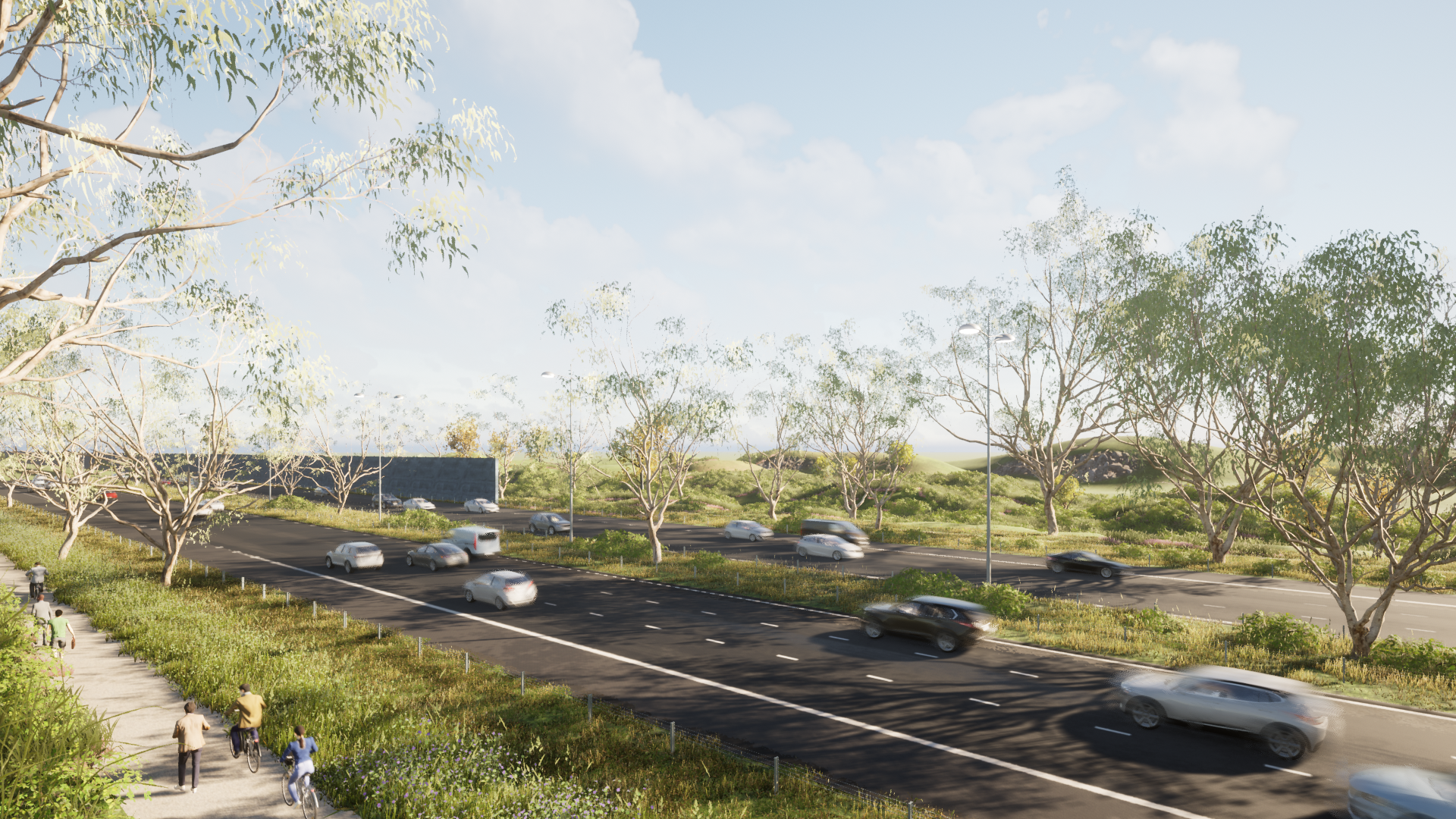
Moving Melton
Transport Prospectus 2022
Active Transport
An increase in the use of active transport, including walking, cycling and scooters, will reduce the number of vehicles on our road network reducing congestion and embed more affordable, healthy and sustainable transport practices in our community.
In 2022 the City of Melton developed the Pedestrian and Cyclists plan to address barriers to active transport with over 640 residents participating in the community engagement. The plan looked at how we can expand the number of households in close proximity to safe routes, and improve connectivity by removing gaps, detours and connecting routes.
Solution
• 90 km of missing paths and 350 road safety improvements to be prioritised by Council
• 120 km of shared path network on major roads which will be advocated through to the State Government
• 240 km of Developer delivered path network which will be managed through permit applications
View the map for the existing active transport network and projects
Micro-mobility (e-scooter and e-bike) trial
Micro-mobility can help reduce congestion and provide alternatives for short trips.
e-scooters
The Victorian Government partnered with the City of Melbourne, City of Yarra, City of Port Phillip and the City of Ballarat to run e-scooter trials for 12 months from February 2022. Following the completion of these trials the Victorian Government extended the use of scooters across all council areas in Victoria as long as there is an agreement in place with a provider and a council.
e-scooters use 'geofencing' to help keep riders and pedestrians safe. The e-scooters automatically cap the users’ speed in ‘go slow’ zones and turn off in ‘no go’ zones. The costs are affordable, and an app manages payments, shows riders where their nearest e-scooters are, and where to park their e-scooters after use.
Early results show strong demand, with the City of Melbourne’s e-scooter trial servicing one million journeys in just 17 weeks. A similar trial in London took almost a year to reach the same number.
e-bikes
e-bikes are fitted with devices that provide precise live GPS locations and data. Similar to e-scooters they use geofencing to limit where the bikes can travel and be parked.
Rules and restrictions for e-bikes are the same as regular bikes, as such a trial could commence at any stage.
On-road bike lane
Off-road shared path
Example of geofencing, ensuring e-bikes and e-scooters are used and parked correctly.
Solution
The City of Melton has identified two potential zones for e-bike and e-scooter use, in the Melton area and the Caroline Springs area. Geofencing would limit use to shared use paths and roads under 50km per hour.
Council would advocate for a private operator to operate an e-bike and e-scooter trial ensuring they meets community expectations.
20 minute neighbourhoods: Increasing the number of trips by active transport from 1% to 5%
Research shows that 20-minutes is the maximum time people are willing to walk to meet their daily needs locally, or around 800 meters from their home. Creating a 20-minute neighbourhood is all about ‘living locally’—giving people the ability to meet most of their daily needs within a 20-minute return walk from home, with access to safe cycling and local transport options. These connected and walkable places are where people can live, work and play; buy their bread and milk, work from home or local business, access services and meet their neighbours at the central gathering places.
By creating well-designed walkable neighbourhoods that are connected through a mix of land-uses, housing types and access to quality public transport, we can create more healthy, liveable communities.
Opportunity
On Census Day 2021, in the City of Melton, 0.8% of residents rode a bike and 1.3% walked to work, this compares to the Melbourne metropolitan average of 1.4% who rode a bike and 3.5% who walked to work.
Victoria Walks surveyed 2,300 Victorians in 2021 and found that 40 per cent of people in Melbourne's outer metropolitan growth areas (Melton, Wyndham, Hume, Whittlesea, Casey and Cardinia) didn't walk for transport at all, compared to 32% of all Victorians. It also found 40% of people in these areas use a private car for all trips – much higher than the state average of 24%. (1)
The biggest barriers identified by the survey were missing or badly maintained footpaths, and a lack of safe crossings at busy roads.We believe that investments in active transport networks will increase the percentage of trips taken via active transport from 1% to 5% in the City of Melton.
This will see reduced car use and congestion and healthier, more sustainable and socially connected ways of travelling within our community.




